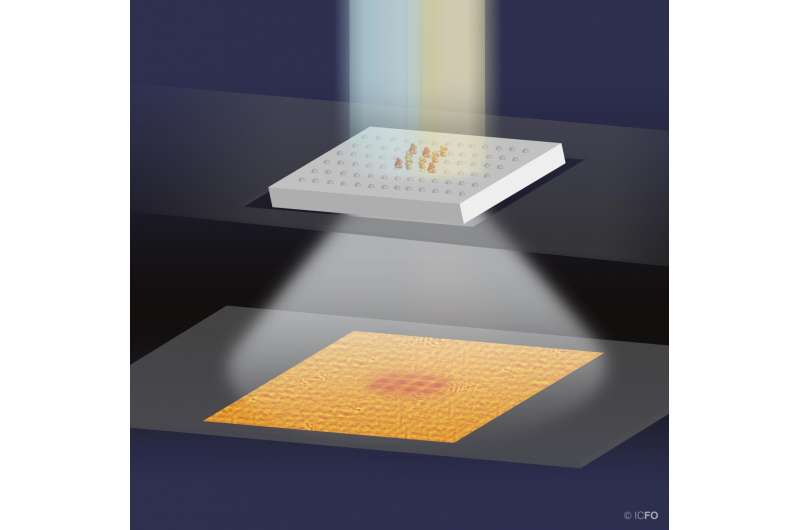A light microscope made only with consumer electronic products

Light microscopes based on scattering, reflection and absorption and combinations of these are indispensable in the sciences, particularly biology. Many improvements have been made in the past resulting in state-of-the-art techniques capable of achieving unprecedented resolution and sensitivity. Cost, however, drastically increases with quality and versatility, making them quite unavailable for general applications.
Holographic, phase contrast or differential interference contrast (DIC) miscroscopes have been implemented especially for visualizing transparent objects, opening a new pathway toward the study and characterization of relevant structures such as biological cells or protein layers. The DIC microscope invented by Carl Zeiss several decades ago is one of the most popular in this field.
Now, even though these techniques offer high sensitivity and resolution, they are severely limited as far as field of view (FOV) and depth of field (DOF), a major drawback and a great limitation for large samples, which require a time-consuming scanning method. The trade-off will always be there—when trying to improve one parameter with a specific combination of lenses, others will deteriorate.
Therefore, in recent years, research has been focused on developing microscopes without optical lenses or objectives that could offer unprecedented FOV while maintaining fair sensitivity and resolution.
In a paper published in Science Advances, ICFO researchers report building a novel, low-cost and compact on-chip microscope made with consumer electronic products, capable of simultaneously measuring nanometer-thick changes over a large volume (0.5cm3) in transparent objects such as glass.
The researchers developed a large FOV interferometric on-chip lens free microscope (LIM) based on a novel design with a very high axial sensitivity and DOF, applying a technique adequate for use in microarray platforms for the detection of proteins without the need for labels.
Project leader Roland Terborg says, "The challenge of developing a lens-free microscope to detect single protein layers (less than 1nm of optical path difference) seemed rather difficult at the beginning. But as we started to develop the device, everything seemed to fit in very well, surpassing our expectations. Instead of having to use very expensive components, we discovered that we could actually use consumer end products without a significant decrease in its sensitivity."
By using collimated polarized light, the team of scientists reconstructed the image by shining light through the transparent sample to observe and analyze the phase shift and interference intensity pattern, a technique known as phase-shifting interferometry (PSI). As UPC Professor Juan P. Torres states, "Any slight refractive index change introduced by an impurity in the sample is translated into a phase difference, and thus an intensity variation in the pattern, showing the contours and therefore size of the irregularity."
ICREA Professor Valerio Pruneri says, "The device means a major step forward for light microscopy techniques, especially for microarray platforms, since it could definitely be used as a point-of-care tool in the diagnosis and treatment of major diseases such as sepsis, a critical area where fast and accurate results can translate into life-changing health outcomes for individuals. We are also thrilled by the fact that this will be part of the Sixsenso spin-off project portfolio including similar devices for detection of particulates and micro-organisms."
The new device has proven to be low-cost, compact, and extremely suitable for point-of-care applications, making it an ideal device for integration in cameras of smart phones or tablets and the detection and scanning of transparent objects or surfaces.
More information: R. A. Terborg et al. Ultrasensitive interferometric on-chip microscopy of transparent objects, Science Advances (2016). DOI: 10.1126/sciadv.1600077
Journal information: Science Advances
Provided by ICFO-The Institute of Photonic Sciences




















